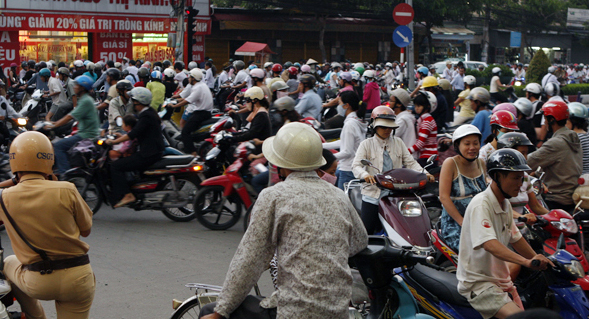Preface
I started my homecoming trip in Hanoi because most of Vietnam’s history began here. And I also wanted to save my birthplace for last, even though that was where my story began some 39 years ago.
Thirty-nine years ago in Bien Hoa, Tinh and Sarah Phan had their last of six children, a surprise. And that was where I was born, 20 miles northeast of Saigon, the former capital of the Republic South before it was annexed to the Communist North. At the meager age of 6 I lobbied to get my parents to let me move to Saigon to attend elementary school in the big city. No sooner did this monumental move happen when South Vietnam put down her weapons in surrender. Our family immediately became second-class Capitalist citizens under the new government because of our bourgeois status and our affiliation to the former regime.
In September 1978 (3 years later), under the new Viet Kieu (Chinese Vietnamese residents in Vietnam) economic asylum policy our family decided to rediscover our ‘Chinese root’. Using our last name Phan (fan) we applied to be released from our Vietnamese residency. We asked for God’s blessings and bid goodbye to everything we’d known. My parents bought seats for the entire family inside the fish storagebin on the 16-meter fishing boat. In the middle of the night, along with 115 others we departed Rach Gia seaport and headed towards Malaysia. After 3 days of traveling and 1 day of floating on international water with a broken engine, a UN ship finally pulled us onto Pulau Bidong, a rustic uninhabited island somewhere in the Malaysia proper. We were the 14th refugee boat to have arrived there, and at the time there were fewer than 1,000 other refugees on the undeveloped island. And there we lived for 9 months, hand-to-mouth with basic foods and supplies provided by the UN and sold illegally by Malaysian smugglers. By the time we were sponsored by my uncle to come to California there were over 40,000 refugees on the island, a fully networked social infrastructure with an informal market that carried illegally smuggled foods from the back shore, fresh fish caught along the island shore, and vegetables grown right on the island.
That was 30 years ago. Now I’m returning to that place that gave me my mother tongue, my fundamental French education, my taste buds for Vietnamese fish sauce, and ironically, my Christian faith in a region dominated by Buddhism and strict Confucius principles. This series of photos are a memoir of things past and reflection of things new.
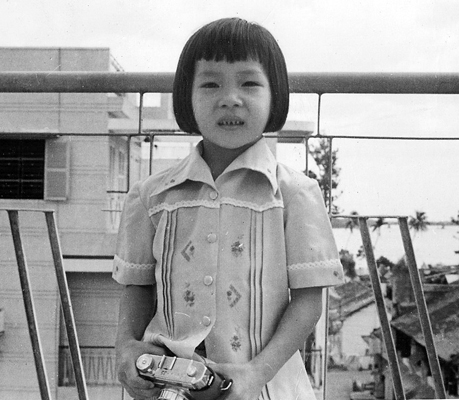
Lily Phan holding her very first camera on the top of the family balcony overlooking the Dong Nai River (Feb 14 ’73).
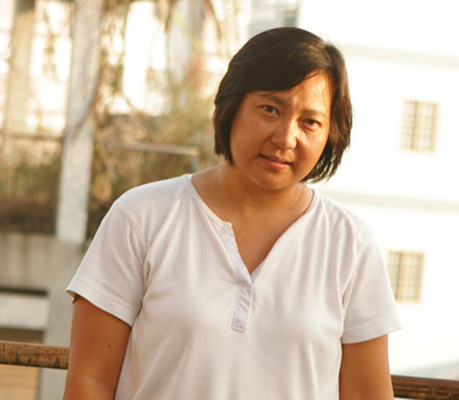
Thirty-five years later, … back at the very same spot on that balcony.
Northern Exposure
In Hanoi even the cyclo driver can tell you mythical stories of Hoan Kiem Lake, the city’s famous urban lake, central to most of its commercial and tourist activities. Besides historical capital Hanoi, mountainous Sapa and Halong Bay compete for a close second on Vietnam’s tourist attractions list – Sapa with its stepped rice fields and diverse ethnic minority population; and Halong with its stalagmites and stalacites caves and thousands of limestone outcrops shooting up from the water. In Sapa live a handful of Vietnamese ethnic minority groups. Situated by the Chinese border, Sapa shares its stepped rice planting technique and the people display Chinese features. Since its discovery the area has become Westernized and prices have also rocketed while the people’s income remain unchanged. Unfortunately, the opening of the region to tourism had altered the people’s charming naivete, where tribal children would now flock towards unspecting tourists to insist on hand-out or purchase of local souvenirs.
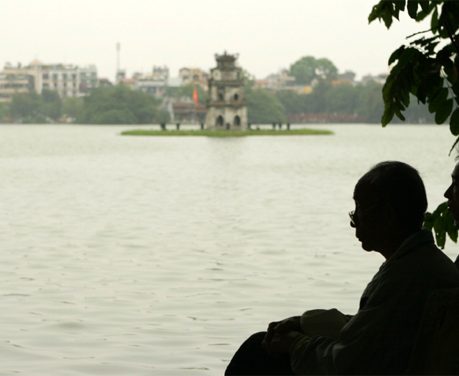
Hoan Kiem Lake on an autumn evening.
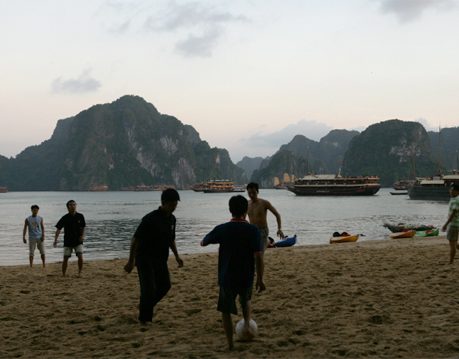
Recreational soccer on Halong beach during sundown.
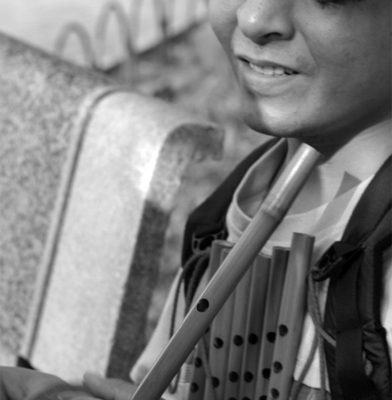
Blind flute vendor sits by West Lake to lure customers.
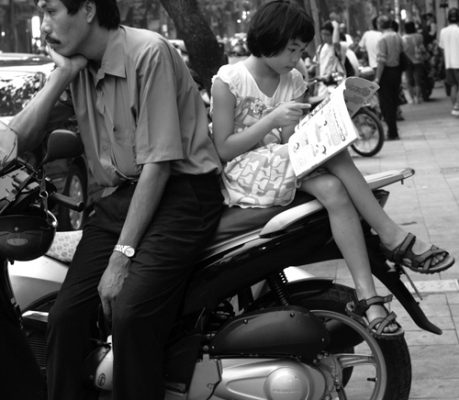
Killing time on a motorbike
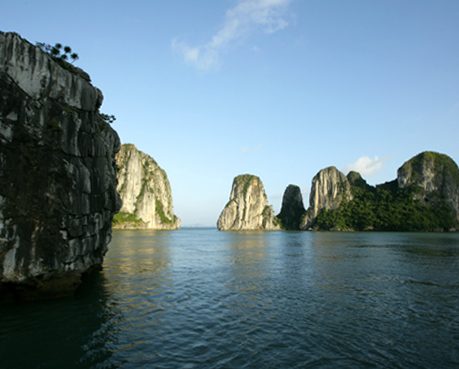
Limestone outcrops of Halong Bay.
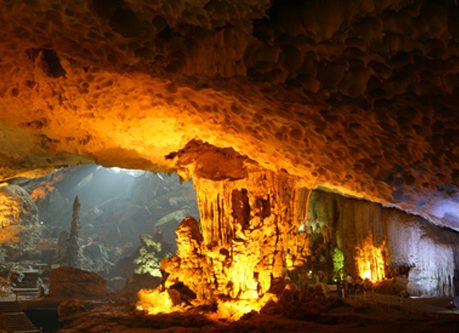
Grotto of Bewilderment in Halong Bay
North Vietnam, the second time
After the first visit of my homeland I made peace with the current affairs as 30 years of memories faded into the distance and my perceptions became more realistic. My stereotypes and prejudice were confronted as I encountered people from the different regions and listened to their lament. From this I realized that before I could empathize I needed to put away the stereotypes that divide the human race.
I met a photographer on a shooting trip in the North who seemed to ignore me throughout most of the trip. Finally, towards the end of our shooting spree she began sharing how after the war her family and other people in this region realized that they were fooled into thinking their southern neighbor needed ‘rescuing’. The other photographer added how difficult life was for them before the reunification, and that war propagandas deceived them into thinking that their southern countrymen ‘suffered’ even more. These faulty perceptions accounted for the fervent war effort against the southern regime.
After the war ended the woman’s father was awarded mayorship for his tireless dedication to the Socialist cause. But despite witnessing the South’s affluence he still did not regret his partiality to the Party and died a proud Communist. His wife, however, had wanted to migrate south in 1954 when all the Hanoi intellectuals left North Vietnam. It was only then that the family discovered their head of household was a high-ranking Communist official. Such was the complexity of the country’s situation during that generation, even within the family.
The woman herself wanted to enlist in the army, but her sister who was already in the army swayed her towards attending college. That proved to be wise counsel because after the war she became a tour guide and got into photography. And here we were, sitting together, former oppositions now fellow photographers sharing our conflicting pasts.
There we stayed the night, eating at a mom and pop’s seaside restaurant. When we arrived, each photographer chose a spot and began composing. I bargained for a little rowboat that got me away from the busy market scene for an hour.
After resting for a day in Hanoi our little troop packed up the SUV and headed east towards Halong City. Instead of hitting the popular Halong Bay, we went the back route to the floating market area where you still get the background of the giant monoliths emerging from the water and the layered effects of the stones one in front of the other embedded in the fog.
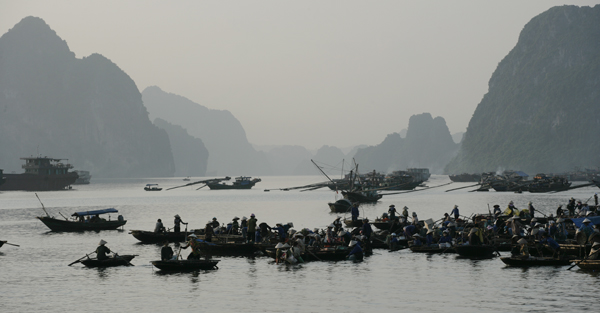
Fishing boats flood the floating market early morning to buy and sell the day’s fresh catch.
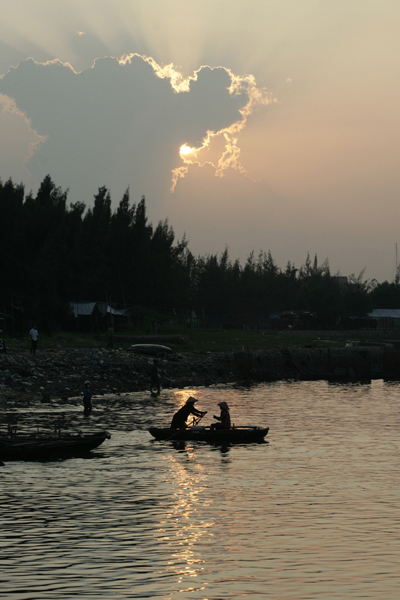
Merchants row back and forth to bring in the day’s catch.
Morning glory
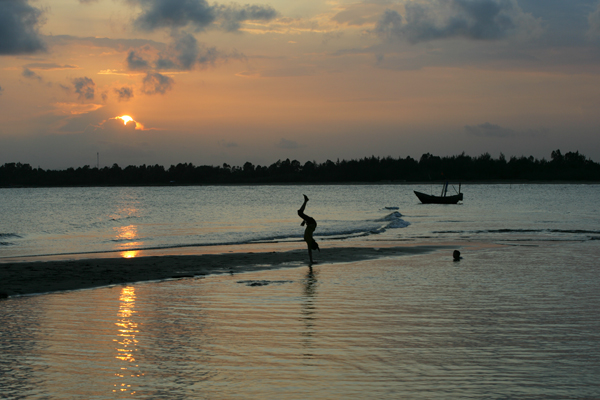
Sommersault in sunset.
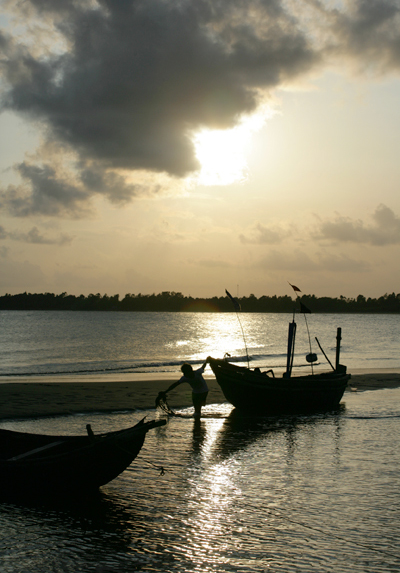
Water dance
Daybreak
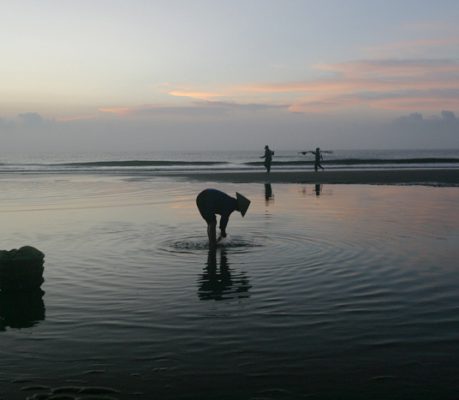
A pond by the sea
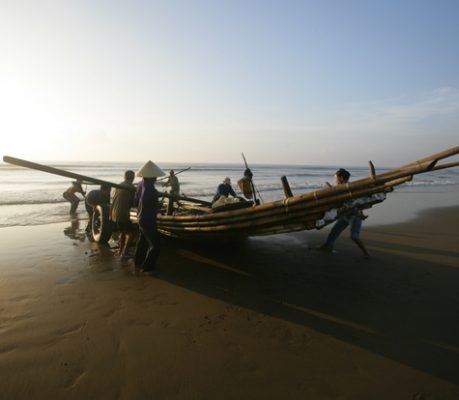
Bamboo boat
Duong Lam Village was my suggestion, to everyone’s surprise, because it was not a widely known tourist destination compared to Sapa and Halong Bay. It is a charming old village that local tourists segway into during their visit to Hanoi, if time allows. I found out about this place by chance when talking with a Northern gentleman at coffee shop in Saigon on my previous trip.
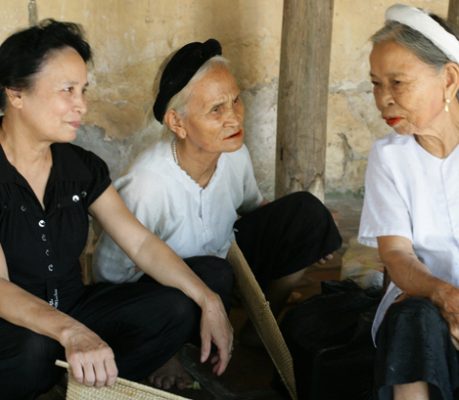
Chat
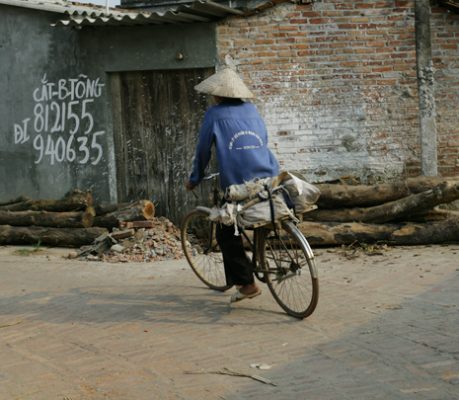
Riding home
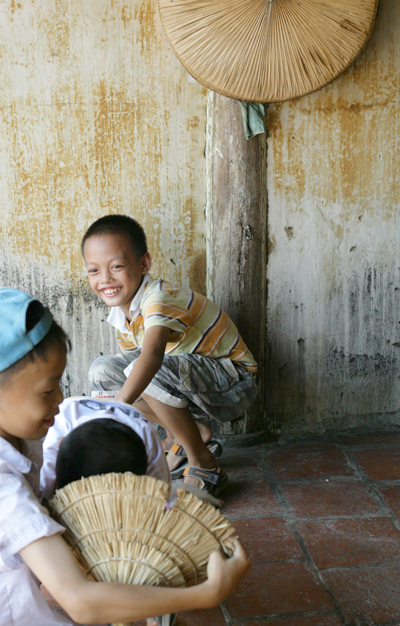
Frolicking
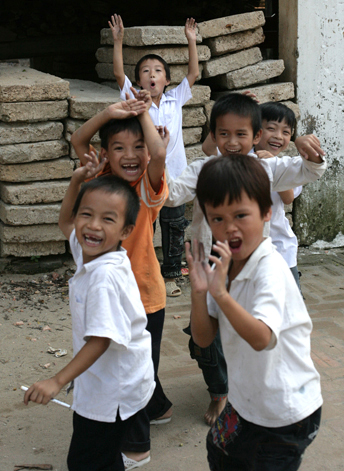
Young Shaolin masters
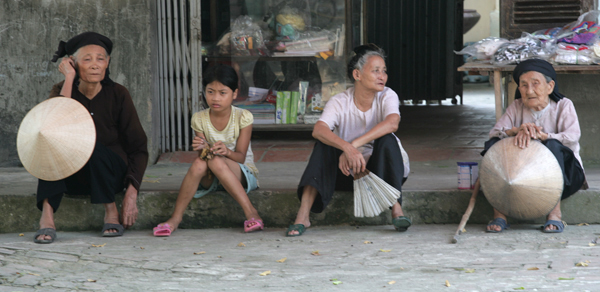
Lazy afternoon
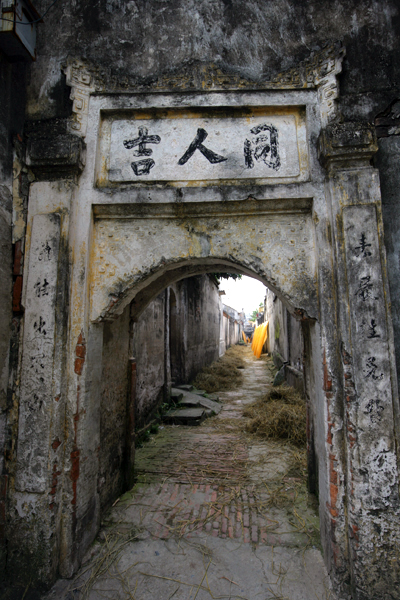
Cu Da Village has remnants of Chinese influence.
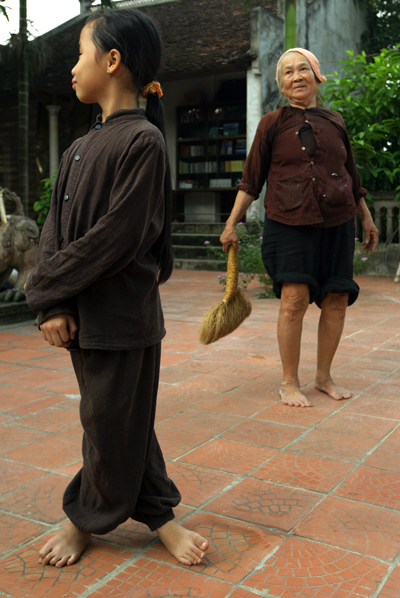
Grandma and child work at Buddhist temple.
Before leaving Cu Da I saw a beautiful young woman who sold porridge at the entrance of a Buddhist temple. In less than a minute she disclosed that she was 30 years old, had 2 kids, and life was hard. I stood there wondering if she was in my shoes what she would be doing with her life. Would she be a photographer? Perhaps a model… Maybe an accountant… Would I be selling porridge if I was living in a northern village? … No, I’d be eating porridge…! I couldn’t stop thinking about the prince and the pauper scenario.
My last stop was Bat Trang, a village I’d visited on my first trip where a friend took me to the famous touristy pottery section. I went around and talked to the workers and found out how much they were getting paid for these laborious tasks. Most of them would probably be stuck in these jobs most of their life because of lack of education and opportunity. For me I had the option to just scooter out of there and enter into a whole different reality… And that is where the last 31 years have brought me, from a bricklaying reality to one of photographing bricklayers…
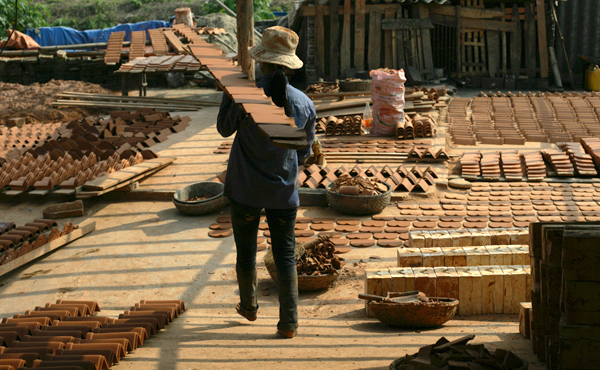
Young woman carries tiles into sun for drying.
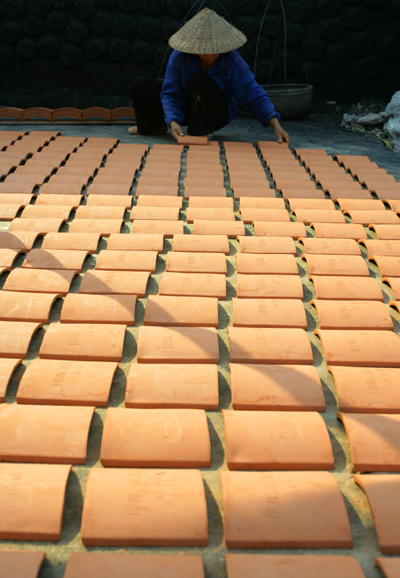
Woman in non la lays bricks in the sun.
Central Vietnam
Central Vietnam is a good contrast to its northern and southern neighbors. Traffic in Hanoi and Saigon lasts throughout the waking hours, and trash lines the streets of Hanoi’s Old Quarter. Taxi drivers and cyclo pedicaps try to rip off foreigners every possible way. (Even the cats learn to beware of the glorified ghetto called “Old Quarter.”) In contrast, the streets in large central cities such as Hue and Danang are relatively quiet and offer a respite from the hustle and bustle of their counterparts in the other 2 regions. Central Vietnamese are well known for their peaceful and laid-back manner. In Hue, men on bicycles and women in flowing traditional ao dai can still be seen on the street. Indeed, Central Vietnam marries the north and the south together. One would have never guessed that most of the last war’s fighting took place here, and these same streets were once lined with corpses of local residents and soldiers.
Danang is the major seaside city in Central Vietnam, with shoreline marked with white sandy beaches, fishermen in round ‘thung’ (basket) boats, long rain and constant flooding. One afternoon I took a walk along the ocean to hear locals tell me their story. It doesn’t take much to get life stories out of a Vietnamese. All you have to do is ask and strangers will tell you their tales. In particular, they look forward to conversing with Viet Kieu visitors, so they can fill them in on the details of what was happening during the 10 tumultuous years after the North/South reunification, the drastic changes that took place internally before the new government ran out of money and decided to reopen the country for tourism and trade. For these people, that gruesome period ended since ‘doi moi’ in 1986 (VNese version of Perestroika), and telling us their former plight is a form of closure. For those who were spared the experience, learning about the tragedies that they barely escaped from brought closure to their past life in Vietnam.
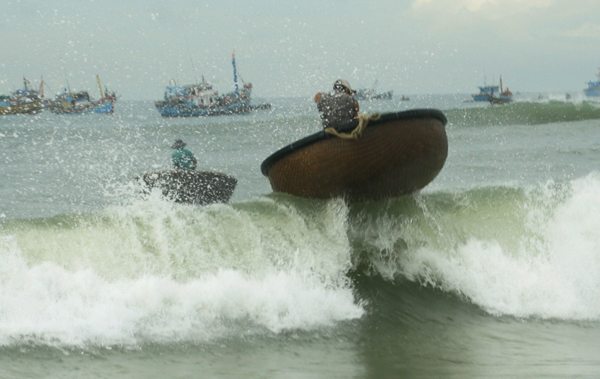
Tub boat surfing against the waves of My Khe Beach.
Hue, Vietnam was the country’s capital in the days when monarchy used to rule. Today it is one of Vietnam’s popular destinations due to its rich history and impressive imperial architecture. Even for a native VNese it is difficult to understand. As such they are used to repeating themselves until the other person understands. Even when these people argue they do it softly. The only thing that may be edgy and extreme in this region is their taste for spicy cuisines.
Hue is known among VNese for romance… Many poems and songs had been written about the city, women in white ao dai, long flowing hair kept beneath the Vietnamese non la (cone straw hat) that often has a poem written from cut out newspaper letters embedded between the layers of the hat. Poetry will ‘appear in the sky’ when the hat is placed against the sunrays. On the last day, right before leaving I was able to capture an image that speaks to the city’s romantic notion.
At the entrance of the folk arts Village of XQ I caught sight of the workers in ao dai arriving before the visitors. I captured them sweeping together by the riverside in their ao dai that gently flap in the wind, with their bodies in sharp focus and the broom motion swiftly moving across the image. In my shorts and t-shirt I mumbled, ‘this is Hue.’
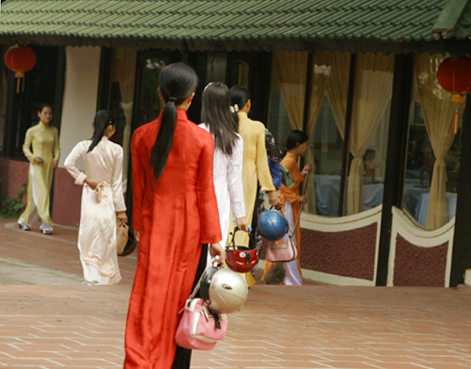
XQ staff with moped helmet in hand entering the arts village.
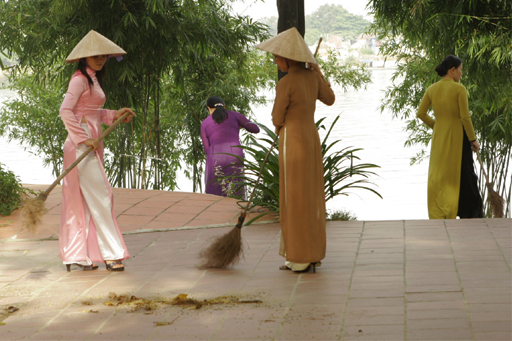
XQ workers in ao dai sweeping the village in the morning.
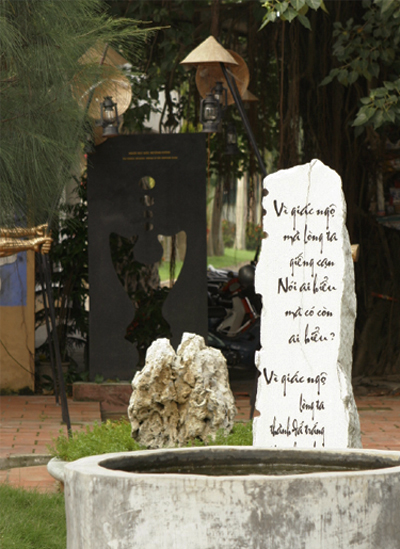
Poetry and art displays inside XQ Village.
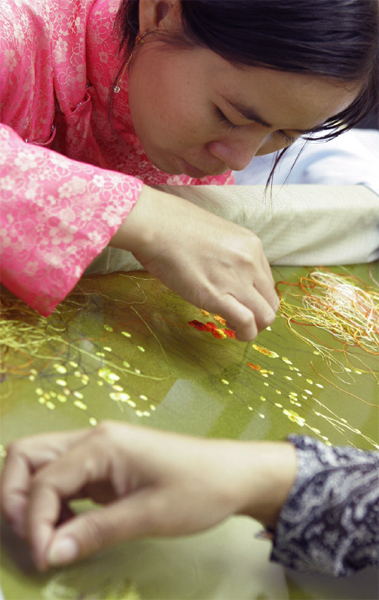
XQ workers stitching paintings from drawing sketches.
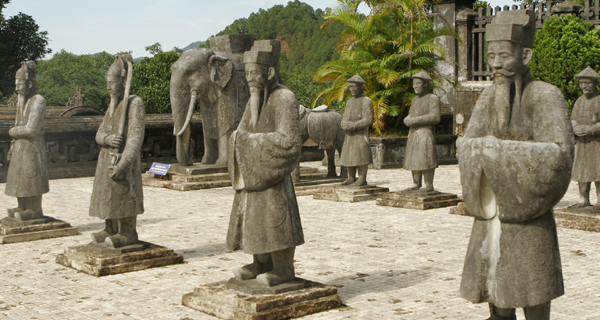
Stone mandarins and soldiers on both sides guarding King Khai Dinh’s tomb.
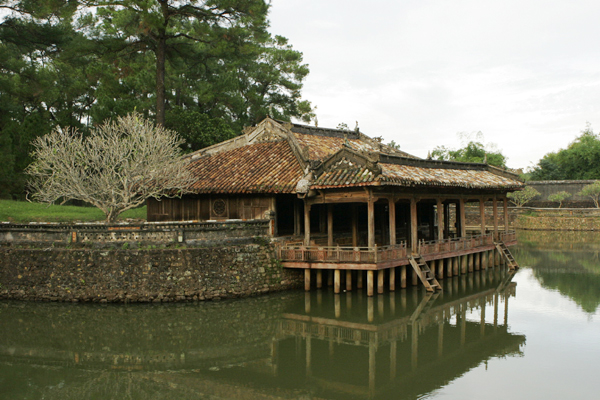
Rest and relaxation area of King Minh Mang’s home.
In XQ there was an inscription in Vietnamese that says,
“Are you an artist?
You must quicken to the highest mountaintop to blend in with the immovable and inexplicable of nature…
And then you must travel to mankind’s pit of misery to feel your heart move… Whence you shall act.
Life will weep for you, giving back the tear drops you shed for the artist who’s gone before…
An artist is like that.”
Another inscription nearby says,
“Would you let me pray to your god?
Because for a long time I’ve been praying to my god.”
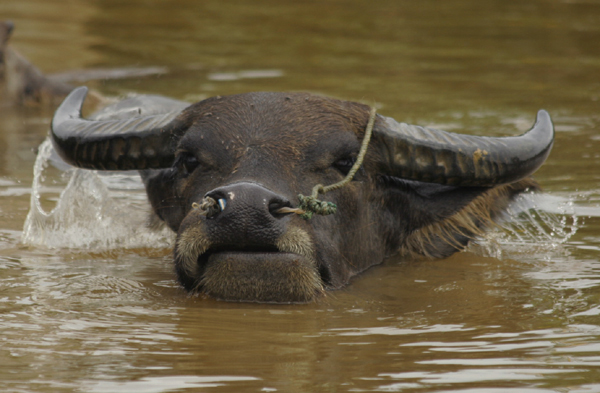
Outside of Hue, buffalos are still the main mode of irrigation.
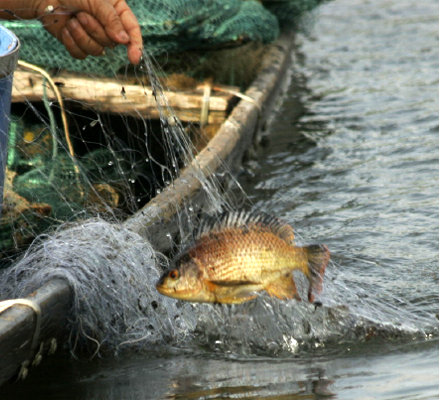
Fish caught in a family pond.
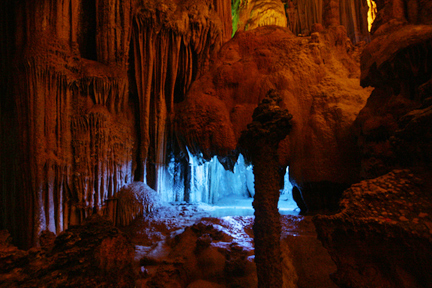
The magnificent Tien Son Grotto with stalagmites hanging.
Nha Trang sits at the southern tip of Central Vietnam, where the people’s politics almost mirror those of Saigon, Vietnam’s unrepentant capitalist. Whereas Saigon constantly plots and conspires of ways to escape, to change, and to survive, Nha Trang accepts her lot and lives out her fate on her white sandy beaches, all the while mumbling under her breath about that unfortunate twist of fate in 1975.
The storm that had been moving from Hanoi to Danang swept through Nha Trang, turning the blue ocean to brown and overcasting the blue sky. But what nature couldn’t change in this beach town resort with the stormy weather was tourists visiting the seaside restaurants and eating fresh caught seafood. Not surprisingly, because of the high ratio of seaside to land in Vietnam, the cost of seafood here is equivalent to U.S. price for chicken. And vice versa, chicken here costs what a lobster would in the U.S., making seaside cities like Nha Trang, if nothing else, a seafood heaven.
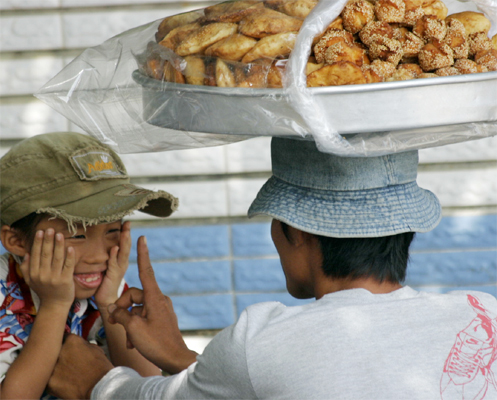
Rebuke…
Salt Farm
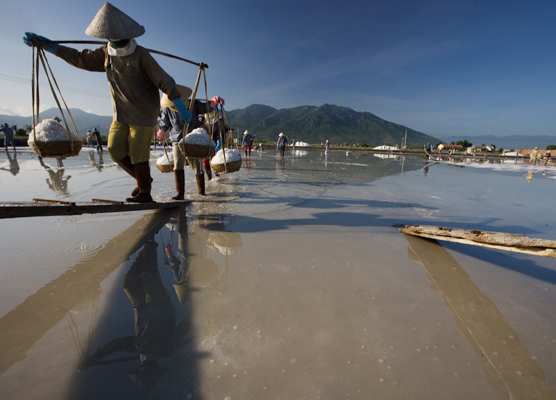
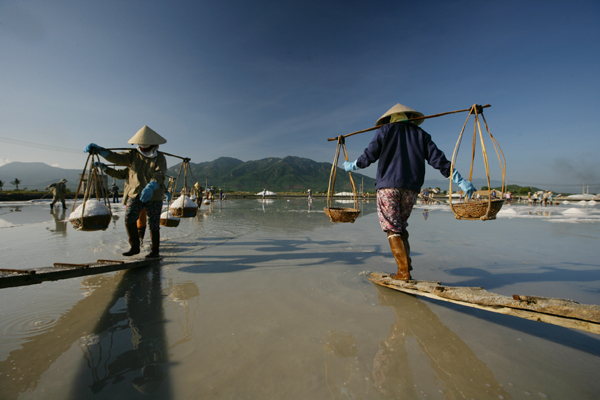
Salt workers walk the planks, casting long shadows onto the shallow water.
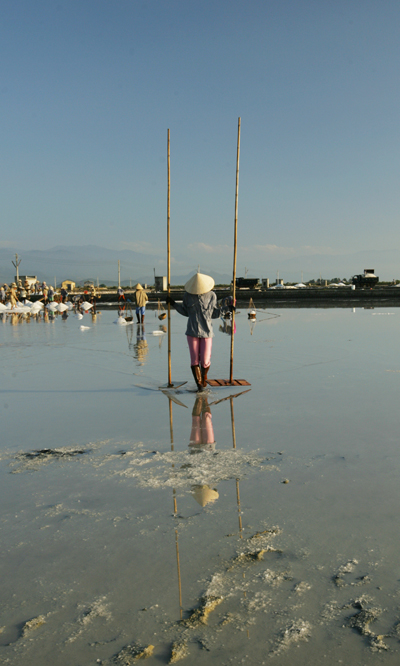
Rinsing shovel
Workers gather salt during sunrise.
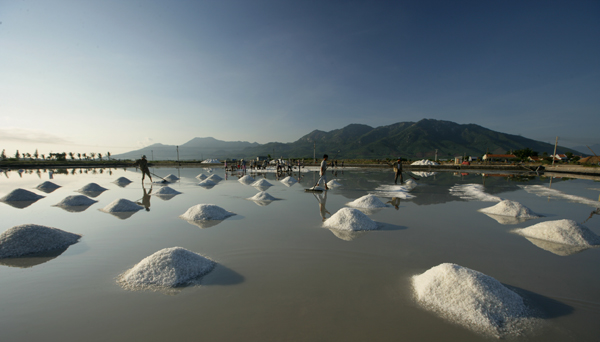
Salt mounds
Reflections
One could say that the intent of my trip to Vietnam this time was to visit the famous Ninh Hoa salt farms that have gainedthe attention of photographers from around the world. These mounds of salt resemble little snow capped mountains made up of white crystals contrasted against the blue sky background, with farmers in cone hats.
Hoi An lies 30 km south of Danang. This small portal city back in the day was part of the Silk Road, where Chinese and Japanese traders came to conduct business. One part of town displayed a strong Chinese influence, and another, traces of Japanese architecture.
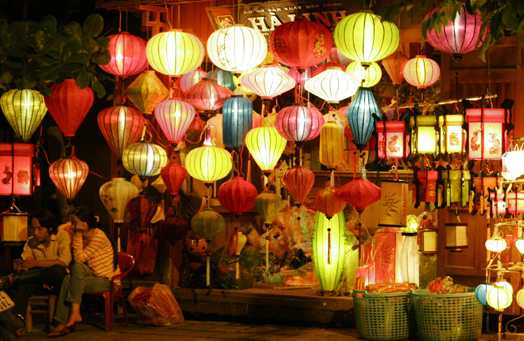
Chinese lantern shop lights up the sidewalk of Hoi An.
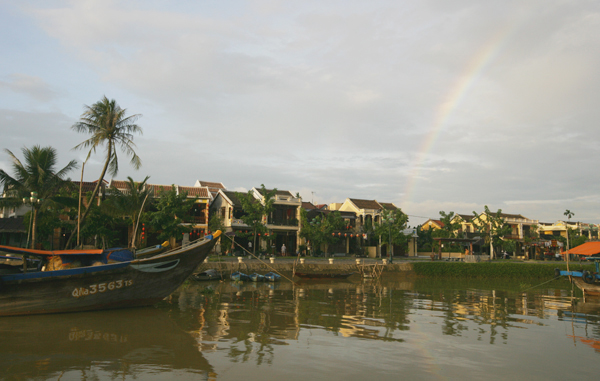
Hoi An water in the morning sun.
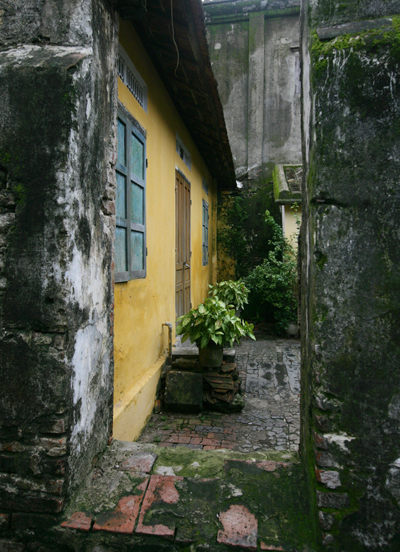
Old City architecture.
Typhoon Ketsana
When dark clouds came and pulled a curtain over the sun, signaling an imminent storm, I immediately booked a ticket for Hanoi flying out of Danang. At the airport, while I was killing time photographing people reading in the waiting room, the announcement came that our flight was cancelled. Within minutes everyone was fighting to get a taxi out of the airport to get away from the storm. And I, soaking wet from fighting the windswept rain that was jet spraying under the entrance covering, finally persuaded one taxi to add me as an extra passenger. In the stormy rain the driver took me to several hotels to ‘test out’ the accommodation. We finally got one near the shore that HE approved with the price (In Vietnam, it’s never a guarantee that your cab will take you where you want to go. From the bottom of their good heart, they will try to give you their opinion on which place is ‘best for the money’, and take you THERE. Same with other vendors. On this trip I once tried to buy laxative medication to flush out my system after Cambodia, and was told by the young salesgirl at the pharmacy to try eating papaya first. After my repeated requests she stuck to her recommendation, and I ended up eating papaya for a cure… It worked. I was just glad I didn’t have any emergency flare up and told to go eat mangoes for a cure.)
I stayed at the coastal hotel for 2 nights without electricity half the time due to outage, and limited food choice because the staff couldn’t go grocery shopping in the storm because nothing was open… When I arrived I was the only guest there with 2 other long-term residents.
With no AC and not being able to open the window because of the storm, I struggled to fall asleep after an hour, (usually I conk out after 5 minutes.) despite fatigue. In the morning I was awakened by loud noises outside my room. When I opened the door there were sleeping bodies lying on the stairs, sitting on the stairs, and people in the reception area… These were refugees from the neighborhood whose roofs were blown away by the storm overnight. My hotel served as a refuge for the neighbors. I immediately quit my complaints about the heat and humidity and lack of food choice and settled in like everyone else, thanking God that I was safe.
As soon as I saw a few kids outside playing in the wind, I wasted no time and started walking towards the ocean to catch some of the aftermath scenes, talking to people along the way.
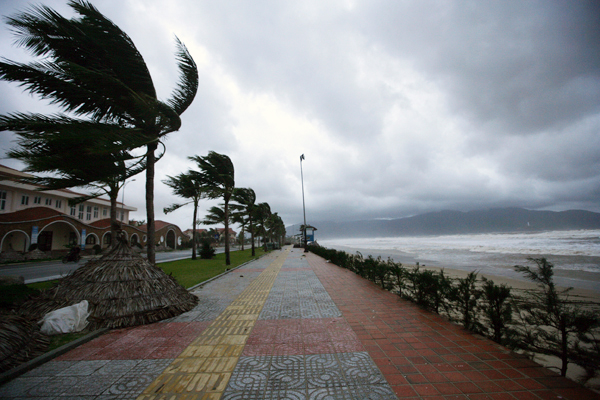
Danang seaside morning after the storm.
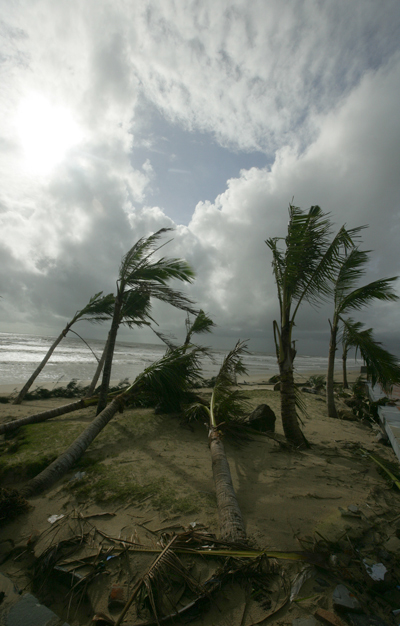
Coconut trees prostrate from wind.
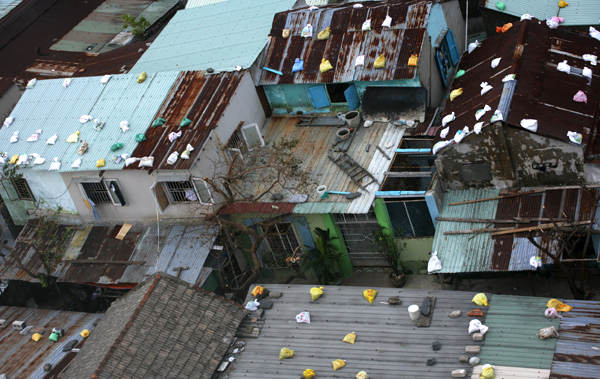
Residents place sandbags on rooftops to keep them from being swept by typhoon.
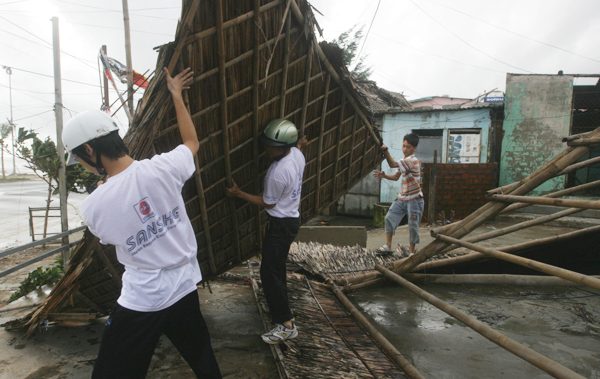
Men repair roof of restaurant morning after the storm.
City under Water
After the storm subsided my friend back in Hoi An finally got cell reception to call and inform me that Hoi An was flooding up to 4 feet and that one could only enter via rowboat, and that I needed to wait before I could return to exchange my ticket. Upon receiving the ‘bad news’, I took a taxi and got there within an hour, hired a row boat to enter the town center where I was just 2 days ago, and shot until the sun went down. Within an hour I made two rounds of the Old Town streets, catching rooftops, and ladders people used to climb upstairs from the outside. My friend told me this was the third major flood in this historical city within the last 100 years. I suddenly realized that my flight delay gave me the opportunity to capture a part of history that I could not have planned.
As I look back at the images from this little adventure it reminds me to be thankful through the storms of our life. God in his infinite wisdom has a reason for placing us in situations that at the present time makes absolutely no sense. And it would be utterly foolish to start doubting his good intentions, even in the storm.
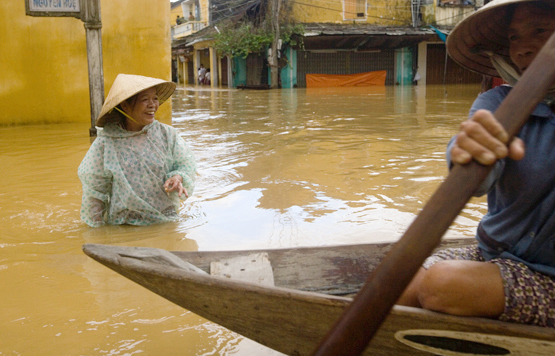
Man rows, woman wades in flood water.
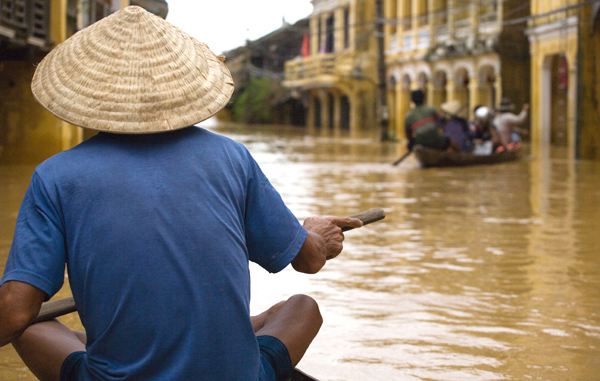
Boat transports people in the rising water.
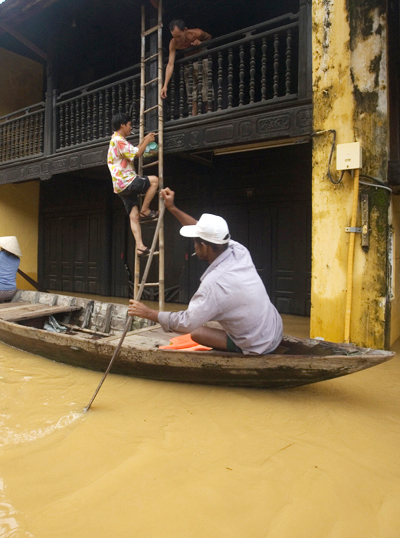
Hoi An residents use ladder to enter home from outside.
Central Highlands
Ban Me Thuoc is the coffee capital of Vietnam. You may have experienced Vietnamese coffe the time it jolted you out of your chair afterone sip. In Ban Me, practically every family grows coffee in their yard and they drink strong and freshly ground coffee like the E Africans. It took me 5 days of cold turkey and 2 deep tissue massages to shake off my caffeine addiction after I left town.
Because land here is picturesque and fertile, Vietnam’s last king built one of his residence overlooking Lak Lake. Today the new government has preserved the area but turned it into a small hotel for tourists. In this city one can visit small islands and large waterfalls and ride elephant within a couple of days.
Among my assignments in the highlands was photographing our family resort home in Dalat, which turned out to be a big challenge because the house was confiscated, renovated, rented out, and re-renovated. I had to ask 3 people in adjacent homes to figure out which stall was ours. Even though most everything had been torn down and rebuilt I still recognized the tiles in one room standing on the outside looking in… I stood still a for moment to let all the childhood memories gush back – the time the siblings and cousins spent entire summer playing hide and seek, Monopoly, Gourd Crab Fish Tiger, and sometimes a game of truth or dare to take a walk to the ‘haunted’ monastery. The house seemed much bigger then, big enough to hold memories for a family of 8 and all the cousins. Now that we’d left and taken our past with us it seemed to have shrunk a bit.
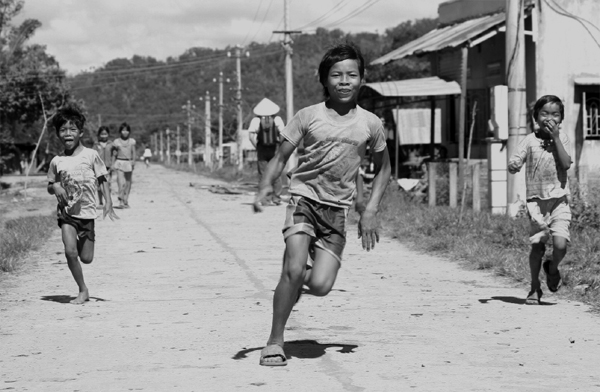
Village boys chasing paparazzi

Little girl catching up to classmates.
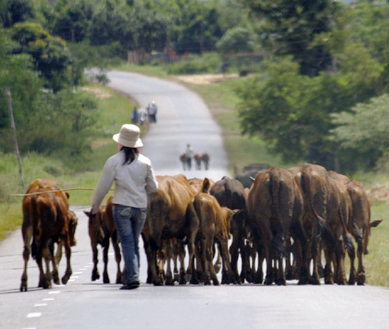
Man rows, woman wades in flood water.
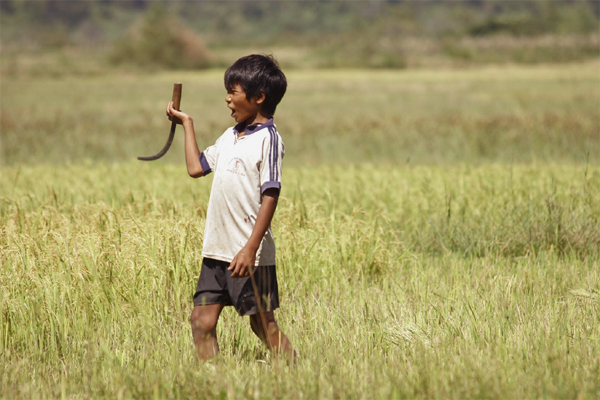
Young harvester taking a break to show off his sickle handling
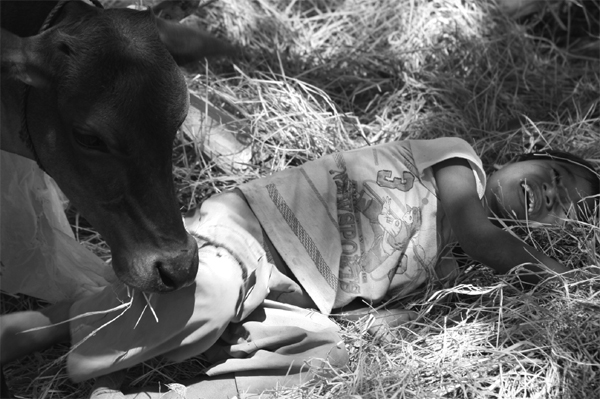
Little guy rolling in the hay while the family cow feeds.
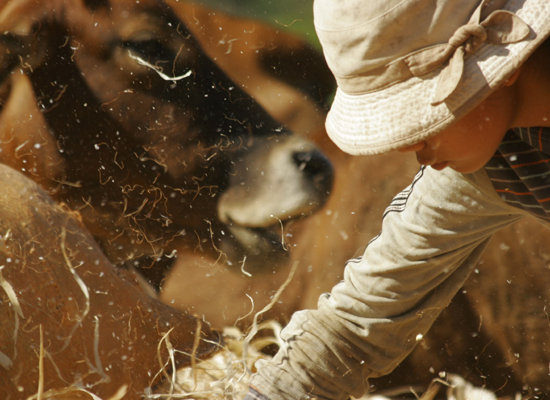
Girl gathering up hays for burning.
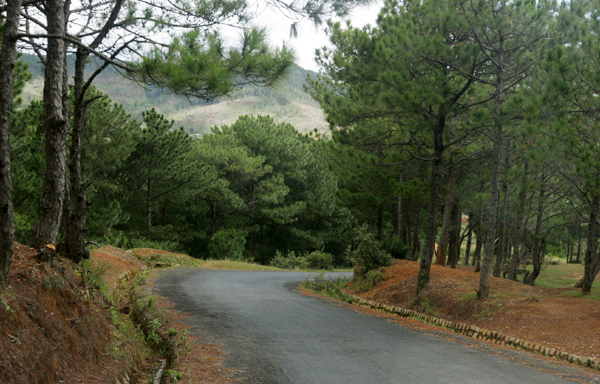
Winding road of Dalat in Lambiang
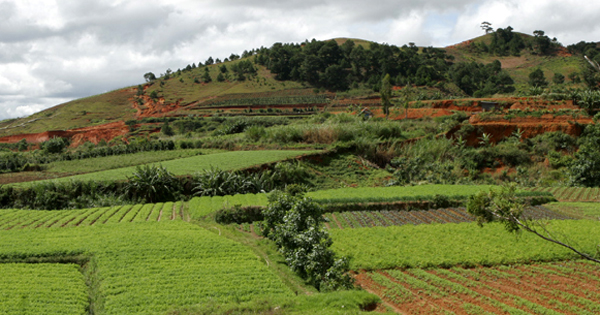
Dalat’s fertile soil
Phan Rang
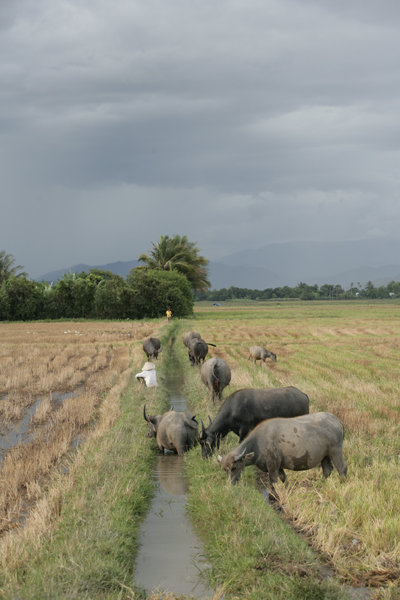
Rice paddies in Phan Rang outskirt with buffalos grazing.

Joy
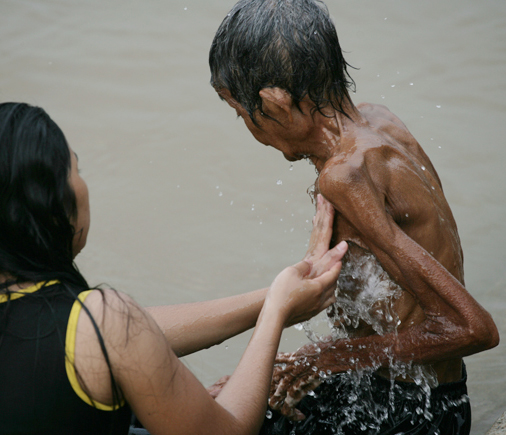
Bathing Grandma
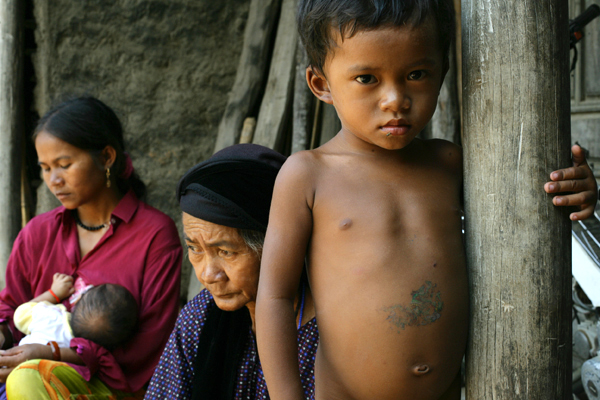
Family
Incidentally, it was this leg of the trip that introduced me to uncle Thanh, whose famous black and white work has gained him international recognition. His work features Vietnam’s daily life scenarios, and notably he shoots only film using his archaic Leica M2 from the 60s. His friendship influenced me to go back to film, which I hadn’t regretted after having to clean my digital sensor 4 times on this trip and getting dust spots all over some 200+ important images.
Uncle Thanh also introduced me to Phan Rang, a city whose existence I wasn’t aware of up to at that point, and naturally, had never planned to visit. He urged me to head to Phan Rang to shoot since I wasn’t being too productive in Nha Trang, and there was no salt farming at the time. He put me on a taxi the next day and I got there in less than 2 hours. It was through the local Phan Rang photographers that I got to encounter other major ethnic groups of Vietnam. After a few days there it became one of my favorite places to photograph in the entire country. The Cham people’s skin tone is darker than most Vietnamese, and their large round eyes sparkle like those of a doe. They look more like Cambodians than the rest of the Vietnamese.
In Phan Rang I shot mostly the ethnic groups in the highland, and also met with the regional photographers after their annual conference. I gave them a bottle of wine on behalf of uncle Long Thanh, who serves as President of Vietnam’s Association of Photographers.
I’d planned to visit Phan Rang only for 2 days with a local photographer that uncle Thanh introduced me to. But it started pouring very hard after I arrived, and the 2 days turned into 5. Uncle Buu took me on his motorbike under the drizzling rain to get to the villages on the mountain, and we ended up shooting underneath different coverings almost the entire time. The unexpected adventure actually turned out to my advantage in that the rain added more dynamics to the composition, and it gave me a taste of Vietnam where it rains almost half the year, often without warning.
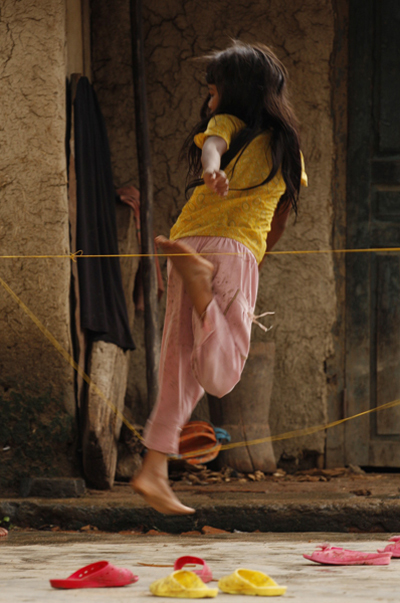
Young girl jumps rope.
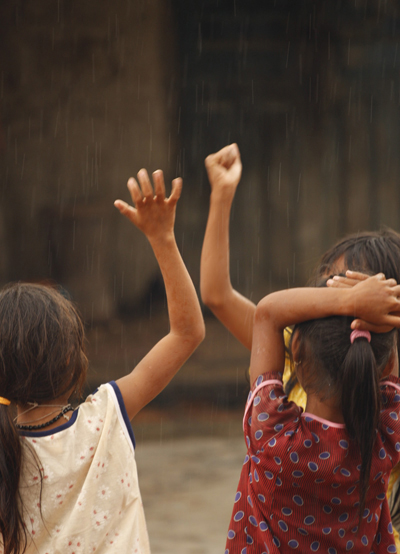
Rock scissors paper in the rain…
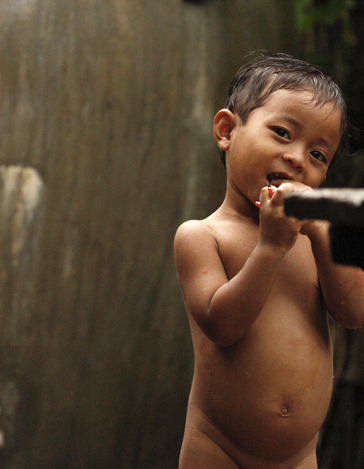
Rotunda

Smoker’s contemplation
South Vietnam
Despite what sounded like an exotic adventure, the 3 days in the Central Highland went by very slowly, mainly because I was counting the minutes until when I would finally reach my home in the South after 33 years, 7 months, and 1 week of absence.
I met my previous tour friend and her boyfriend at the hotel behind the famous Ben Thanh Market. That evening I was introduced to Hai Lua (‘Two Grains’) Restaurant, a popular busy outdoor joint that offers cuisines from all 3 regions of Vietnam. Sea, land, sky creatures they came on plate after plate after plate. This was what my friend was telling me about when she said Saigon is the confluence of all 3 Vietnamese cultures, North, Central, and South. Here you can find every product that Vietnam has to offer. And after tasting the multiple dishes that she ordered I was fully convinced.
Another previous tour friend joined us the next morning for breakfast, having taken a 2-hour boat ride and a 1.5-hour car ride to get to Saigon just to meet with us for breakfast, then taking us to lunch. This is the Vietnam I know and remember, where friends go all out for each other, especially when it comes to partying and entertainment. Such was my reintroduction to Saigon on the first 2 days. And then I felt right at home.
Thereafter, I reunited with a friend of 28 years, and more friends of 30 plus years, and thus had little time to write or photograph while in Saigon. The second day in Saigon my friend had her chauffeur take me back to my old home, where I spent three monumental years under the current regime. Because all the street names were changed we had to do a lot of maneuvering before spotting the house. Once arrived I had to ask permission to enter the house, and was actually denied by the owner. Nevertheless, I entered with the renter’s permission to ‘use the restroom’ and managed to see our old kitchen and the staircase… before dashing out of my old home like a bandit.
There were a lot of memories there, too. And this house seemed to shrink even more so than the Dalat house. On May 2, 1975, on the top balcony my 2 cousins and I spit longan seeds at the new soldiers standing at the intersection. I think we missed them because we didn’t end up in re-education camp. As underaged children, that was our small contribution to the war, firing longan seeds at long range from the balcony.
A few days later, the chauffeur dropped me off in my birth town, Bien Hoa, now a booming industrial city full of foreign investment firms and manufacturing plants. When I entered the market place I remembered my way home… I traced my old footsteps until I was prompted by my relative to stop. Looking up at our 4-storey, 7-bedroom house, mental images that have been waiting for over 30 years leapt into reality. The floors and balconies of this house contained enough childhood stories to fill a small library.
I spent 3 days in Bien Hoa walking the streets talking to people and photographing anything to piece all the mementos of my family. People I met basically said the same thing, “Your parents were lucky that they got out. They would have suffered a lot because they were on the top 10 list to be sent to re-education for their capitalist status. But things are okay now…” The first part made me realize how much we owe our parents for getting us out of harm’s way. The second affirmation healed me of my sorrow for those we left behind.
After walking up and down memory lane I was taken across town to be introduced to relatives. It seemed people along the street all seem to know my family. And to my surprise no one asked for financial assistance. Instead they welcomed me back by serving me all the tropical fruits that I have been craving, and showing me old family photos, filling me in on the last 30 years. Some would say, “Your grandparents’ house used to have the bong su tree (plumeria) in the front, no? Yes, there’s a road going through it now.” Notably, Bien Hoa has a population of well over 300,000, yet people still remember a plumeria tree as a local landmark. How precious is that… Industrial development and expansion and evolving government could never replace or take away personal memories.
As I traveled into the Southwest/Mekong Delta region, more food, more invitation to eat home-cooked meals in strangers’ homes, and more stories told along the road as I photographed people and places. In South Vietnam I experienced the overwhelming kindness, down to earth hospitality that I hadn’t in any other places I’d traveled to. And if I keep writing I migh say too much.
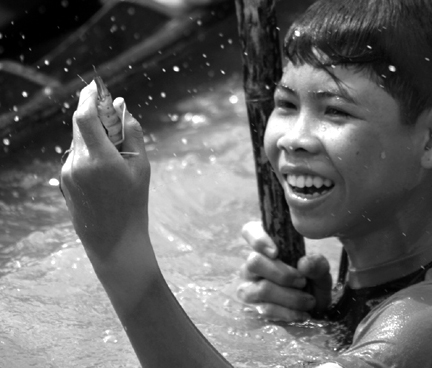
Young boy’s big catch in Can Tho.

A little entrepreneur selling bananas at the floating market near Can Tho City.
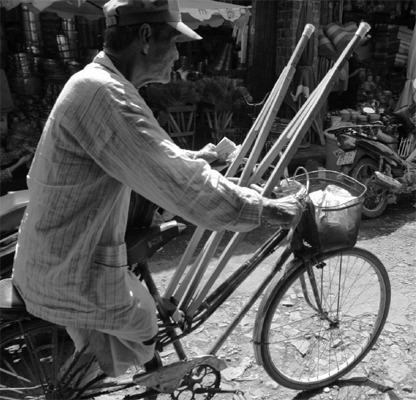
Crippled, but not disabled…
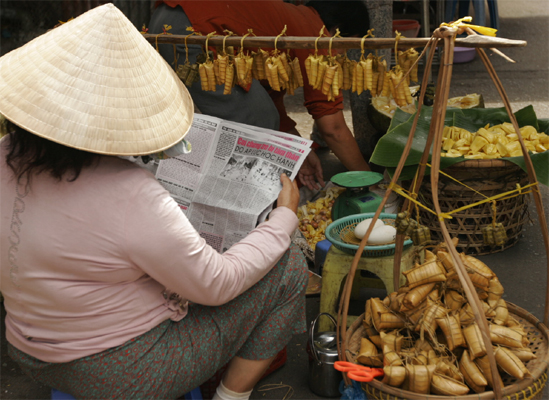
Street food vendor reading up on news.
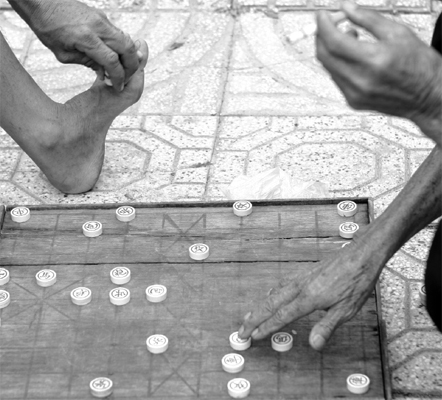
Two men strategize on a game of Chinese chess.
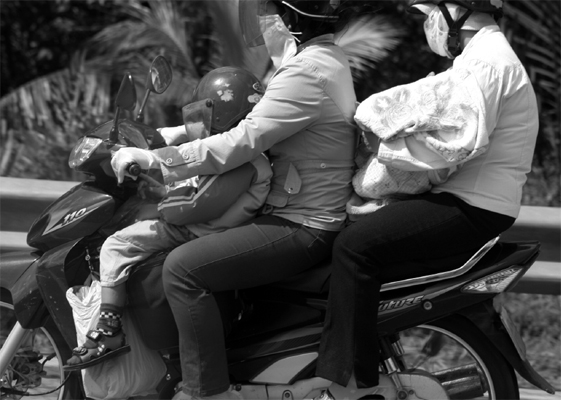
Family on wheels.
Saigon
I spent a lot of time shooting Saigon’s Chinatown with the help of an honest xich lo pedicab whom I hired for 2 consecutive days and trained him to look for my subjects. After some time he knew what I wanted and became my second eye in pointing out all the potential shots, and eventually, even learned to park at the perfect angle for each shot. So this xich lo driver became my invaluable assistant in Saigon and to whom I owe a portion of my photogratitude. I witnessed the new Vietnam first hand with its insane traffic that spills onto the sidewalk during rush hour, potholes filled with dirty rain water after a heavy downpour. If I could sum up Saigon in pictures, the following would depict this charming city that some call ‘Pearl of the Orient’, and others, ‘Harlot of the West’…
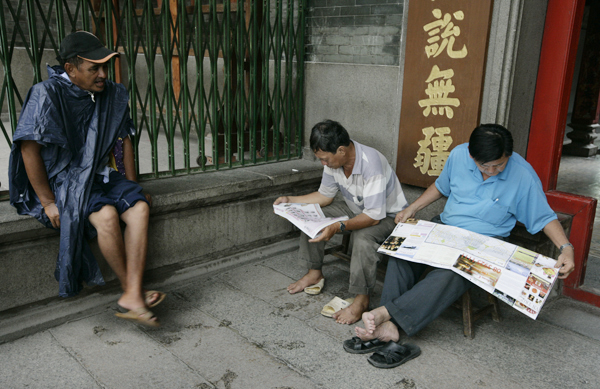
My xich lo driver and two men reading in front of Buddhist temple.

Afternoon nap on sidewalk
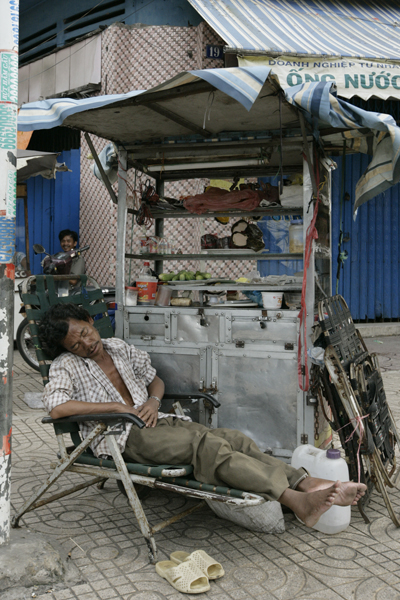
Napping food vendor
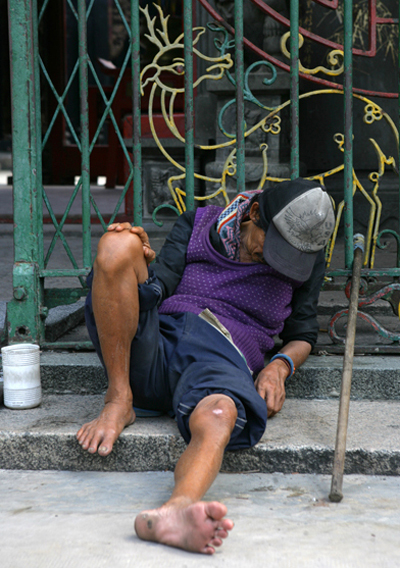
Beggar naps at Buddhist Temple gate in Chinatown.
